#every purchase is donated to charity!! :D
Explore tagged Tumblr posts
Text
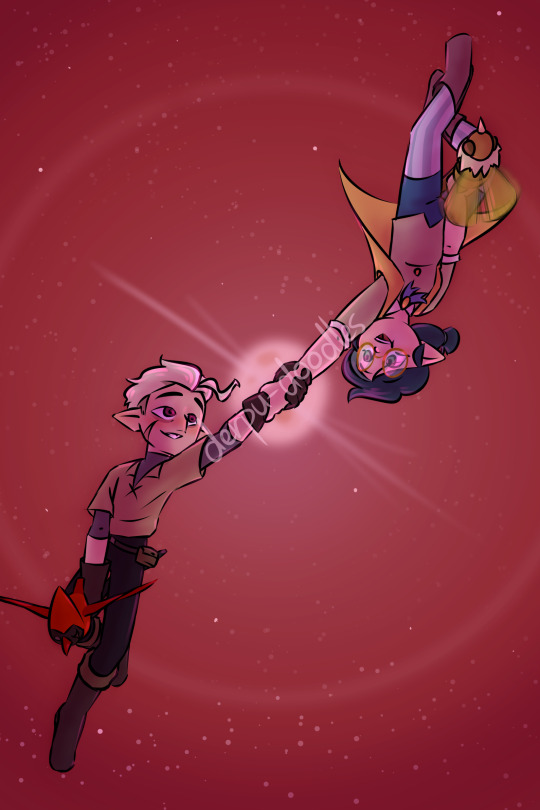
—Late Night Flight
my piece from the @huntlowzine, Half Witches, Whole Hearts: A Huntlow Zine!! orders are being sent out, and I believe there may be leftovers as well if anyone would like to purchase some!!
#everyone has such lovely piecesssss EEE#if it looks like it's from September that's because it is shhh#aNYWAY I had a lot of fun workin on this!! go check us out#every purchase is donated to charity!! :D#The Owl House#TOH Hunter#TOH Willow#Willow Park#Huntlow#Huntlow zine
165 notes
·
View notes
Text

I really wanted to help with the current situation so I decided to do
🍉YCHS 4 PALESTINE!!!🍉
You can get these YCHs thru my kfi !!!!
and all proceeds at the end of the month will be split evenly between care for Gaza and PCRF!
You may ask why I’m using Kofi! A very valid question! The answer simply put is
1. It is much easier for me to keep track of what I’ve done and need to do through it
2. All purchases are public so I can be held accountable!
On the 1st of march I will donate every penny I make to the 2 charities listed above and share the receipts on social media publicly so it can be checked publicly by whomever wants to make sure I have donated it all :D !!!
If you have any questions whatsoever please lmk!!!
RBs and sharing to ppl you think would be interested is super appreciated!
7 notes
·
View notes
Text

Today is July 28th, which means it’s the last day to buy our General Imprint Pride Bundle and Erotica Imprint Pride Bundle, save money on our stories, and help us raise funds to donate to the Ali Forney Center and Transgender Law Center!
Each bundle costs $19.69, in honor of the year of Stonewall. The Press is donating 40% of our share of the proceeds to the charities, and many of our authors chose to donate part of their share to charity as well, with the result that more than 35% of each bundle sale will go directly to the causes our authors have chosen to support. Thus far, we’ve raised just over $300; we’ll divide our final total in half and make the donations once the fundraiser is complete, and we’ll post receipts for transparency purposes.
The General Imprint bundle includes 14 short stories – 175 pages of very queer fiction – with works by Alec J. Marsh, Annabeth Lynch, D. V. Morse, Era J. M. Couts, J. D. Harlock, Nicola Kapron, Nina Waters, nottesilhouette, Puck Malamud, R. L. Houck, Sage Mooreland, Theresa Tanner, Tris Lawrence, and Violet J. Hayes. Approximately $7 of every General Imprint bundle purchase goes to charity (35%).
The Erotica Imprint bundle includes 11 short stories – a steamy, smutty 151 pages – with works by Aeryn Jemariel Knox, Alec J. Marsh, boneturtle, Dei Walker, Lyn Weaver, Mikki Madison, Nina Waters, R. L. Houck, Samantha M. Piper, Tris Lawrence, and Xianyu Zhou. Approximately $8 of every Erotica Imprint bundle purchase goes to charity (40%).
DUCK PRINTS PRESS gets your eyes on two whole bundles of our publications.
THE CHARITIES get cold, hard cash!
AND YOU get great stories, a sampler of works written by the authors who are part of Duck Prints Press! Some come on over and BUY YOUR 2023 GENERAL IMPRINT AND EROTICA IMPRINT PRIDE BUNDLES NOW!
You can read more about this charity drive, the Press, the charities, and the stories by reading this post!
16 notes
·
View notes
Text
New Gotham: Part Two

Sacred Martyr Church: The Sacred Martyr Church has contributed a lot to the community. For the past twenty years, it has provided hot meals to people in need and is sometimes converted into a homeless shelter when other shelters are at capacity. Food drives are organized here multiple times a year. It's where I had my first charity event for the Wayne Foundation after I became CEO of the organization. Thanks to Alfred's guidance, it was a success. It has since become a yearly event. Eight years ago, I organized a donation drive, which was interrupted by an attack by Killer Moth. Because I was hosting the event at the church, Dick had to take down Killer Moth by himself so I could preserve my secret identity. He did very well.

S.K. Animal Shelter: The animal shelter was built in the 80s and was in pretty bad shape when I visited it for the Wayne Foundation. It only occupied the first floor of the building and didn't have enough room to house all of the rescues. I made a few donations to expand the shelter and the services it offers, though I'm not the only patron. Apparently, there is a young woman who visits the cats every week, and always donates food and money before leaving. Because of this, the shelter now has four full-time veterinarians, a physical therapy department and grooming rooms. I've since made it a tradition to donate to the shelter every year. Alfred, Dick and I eventually ended up adopting our own dog, Ace. He lived with us at the manor for many years until Julia brought him with her to England where he's currently living out his older years.

Split Pea Catering: This is one of the most popular catering companies in Gotham City. I've done business with them on multiple occasions in the past, especially for fundraising events. They hire over a dozen chefs and provide job opportunities for ex- convicts. They also offer food and services to various soup kitchens around the city. The owner's dog, Kylie, has become the company's official mascot. She accompanies her owner when delivering food to soup kitchens and brings a lot of happiness to the citizens of Gotham. She even received the Gotham Medal of Valor for her contributions to the city. She was the first dog ever to be awarded that honor.
I remember that dog! Bruce had hired Split Pea Catering for one of his parties at the manor and there was Kylie, dressed to the nine with her medal and everything! - T. D.

St. Aloysius Church: St. Aloysius is one of the oldest churches in the city. It was built in 1693 using rocks mined from the North Gotham hillside, which were provided by Wayne Mining, one of Wayne Industries' oldest branches. It's one of the only buildings in Otisburg that hasn't been modernized or replaced. Oswald Cobblepot tried to buy it multiple times to demolish it and build a new Cobblepot company headquarters in the district, similarly to Wayne Tower and Foxteca. Petitions were signed to preserve St. Aloysius church, and after Oswald's fourth purchase attempt, the city declared it a historical site. The nuns of St. Aloysius are also known to take in strays and organize adoption events at the church. I'm pretty sure Catwoman met many of her feline friends there.
5 notes
·
View notes
Text
Comprehensive Guide to Crypto currency Taxation: What You Must Know!
Navigating the complex world of crypto currency taxation can be overwhelming, but at SAI CPA Services, we’re here to guide you through the process with expert insights and support. Whether you're a seasoned investor or just getting started, understanding your tax obligations is crucial to staying compliant and avoiding unnecessary penalties. Here's a detailed breakdown of what you need to know about crypto currency taxation.
🔍 Taxable Crypto currency Transactions:
Several common activities within the crypto currency ecosystem are considered taxable events. Here's what you should be aware of:
Trading Crypto currency:
When you exchange one crypto currency for another, such as trading Bit coin for Ethereal, this triggers a taxable event. The IRS views this as a sale, meaning you'll need to calculate and report any capital gains or losses.
Selling Crypto currency:
Converting your crypto currency into fiat currency (like USD) is another taxable event. Any profits or losses must be reported, whether the sale results in gains or losses compared to your initial investment.
Spending Crypto currency:
Using crypto currency to purchase goods or services is also considered a taxable event. The difference between the original purchase price (basis) and the market value at the time of spending must be reported as a gain or loss.
Mining Crypto currency:
If you're involved in crypto currency mining, the value of the mined crypto currency must be reported as income at the time it's received. The fair market value on the date of receipt becomes the taxable income.
Staking and Yield Farming:
Rewards earned through staking or yield farming activities are considered taxable income. These should be reported when received, with the value at the time of acquisition included in your taxable income.
🔍 Non-Taxable Crypto currency Transactions:
Some transactions involving crypto currency do not trigger taxes. Knowing these can help you structure your activities more effectively:
Purchasing Crypto currency with Fiat:
Simply buying crypto currency using fiat currency (such as purchasing Bitcoin with USD) is not a taxable event. However, it's essential to keep accurate records of your purchase price for future reference.
Transferring Crypto currency Between Wallets:
Moving your crypto currency from one wallet to another, as long as both wallets belong to you, is a non-taxable event. No gain or loss is realized through transfers.
Gifting Crypto currency:
Giving crypto currency as a gift is generally not taxable for the giver, as long as the value is below the annual gift exclusion limit. Be aware, though, that the recipient may have to deal with tax consequences later on.
Donating Crypto currency to Charity:
Donating crypto currency to a recognized charitable organization can be tax-deductible. This could provide potential tax benefits, especially for long-term held assets, but consult with a tax professional for specifics.
📋 Reporting Obligations:
Accurate record-keeping and timely reporting are key to avoiding penalties related to crypto currency transactions.
Maintain Detailed Records:
You should maintain comprehensive and accurate records of every crypto currency transaction, including dates, amounts, purchase prices, sale prices, and wallet transfers. These records are crucial for calculating gains or losses.
Report on Form 8949:
Crypto currency transactions are reported on Form 8949. This form is used to detail each taxable transaction, including sales, trades, and spending of crypto currency.
Transfer Information to Schedule D:
The information from Form 8949 is summarized and transferred to Schedule D on your personal tax return (Form 1040). This form calculates your total capital gains and losses.
Failure to Report:
Failing to report crypto currency transactions can result in fines, penalties, and even criminal charges in some cases. It’s critical to comply with all IRS requirements.
📈 Understanding Tax Rates:
Crypto currency transactions are subject to capital gains tax, and the rate you pay depends on how long you've held the asset and your income bracket:
Short-Term Capital Gains:
If you've held a crypto currency for less than one year before selling or trading it, any profit is taxed at the same rate as your regular income, ranging from 10% to 37%, depending on your tax bracket.
Long-Term Capital Gains:
For assets held longer than one year, you benefit from lower tax rates on any gains. Long-term capital gains are taxed at 0%, 15%, or 20%, depending on your income level.
💡 Consulting a Professional:
Everyone’s financial situation is unique, and the rules surrounding crypto currency taxation can be complex. SAI CPA Services specializes in helping individuals and businesses navigate these regulations to ensure compliance and optimize tax outcomes. If you're unsure about any aspect of crypto currency taxation or need personalized guidance, don’t hesitate to reach out.
Stay informed and stay compliant to avoid surprises during tax season!
📩 Contact us at support [email protected] or visit our website https://www.saicpaservices.com/ for professional assistance. Let us help you make the most of your crypto currency investments while staying on the right side of the IRS.
#CryptoTax #CryptocurrencyTaxation #TaxCompliance #CryptoCommunity #IRS #SAICPAServices

0 notes
Text
The positive auction
The positive auction https://seths.blog/2024/03/the-positive-auction/ In 2023, I developed a new idea that transforms an old way of doing commerce. In traditional auctions, there are rounds of bidding and the high bidder pays to get the prize. The last bid is the amount paid, and no one else is charged anything. This is an interesting ‘game’ in which all participants are able to express their desire for the item in monetary terms. In an efficient auction, the price paid will represent the highest utility among the bidders, with no one feeling remorse–including the seller–because the “market has spoken.” Over time, these sorts of auctions aren’t actually as efficient as they seem. This is why other times of auctions have evolved. These include: The four most common types of auctions are: Dutch Auction: In a Dutch auction, the auctioneer starts with a high asking price, which is gradually lowered until a bidder accepts the price, winning the item. Multiple units of the same item can be sold simultaneously, with the price decreasing until all units are sold or until a bidder accepts the current price. Sealed-Bid Auction: In this type of auction, bidders submit their bids privately without knowing the bids of others. Once all bids are received, they are opened simultaneously, and the highest bidder wins the item. This format encourages bidders to submit their true valuation of the item. Vickrey Auction: Also known as a second-price sealed-bid auction, this format is similar to a sealed-bid auction, but the winner pays the second-highest bid rather than their own bid. This encourages bidders to bid their true valuation, as they won’t pay more than what they believe the item is worth. When bidders have an understanding of the nature of the bidders in the room as well as their options, bidding is skewed. For things like spectrum, this can cost the seller billions of dollars. I chose to address the problem of charity auctions. Often run at galas, they depend on a combination of status and alcohol to generate high bids for items that the buyers might not have imagined wanting to purchase before the event began. As a result, the results are often quite disappointing to the seller, often a worthy cause. The positive auction transforms the dynamics of a charity auction by changing two elements: Most profoundly, every bid is a donation. Bidding begins at $10 and increments by ten dollars per bid. Bidders are not permitted to skip a step. The total raised increases exponentially. Specifically S=(n/2)(2a+(n−1)d) S is the final sum. a is the first number and d is the increment. In practice, then, the bidding results look like this: Starting bid $5 Incremental bid $10 Number of bids 125 Winning bid $1,245 Total raised $78,125 Starting bid $5 Incremental bid $10 Number of bids 150 Winning bid $1,495 Total raised $112,500 Starting bid $5 Incremental bid $10 Number of bids 300 Winning bid $2,995 The second innovation is incorporating “free bids” into the auction. The organizer of the auction can offer free bids to bidders at no cost to the seller. In fact, free bids can actually increase the amount raised. For example, a free bid could be rewarded to anyone who recruits someone who bids in an auction. When used, the free bid ratchets up the auction, meaning that the next bid will be higher. Even if a free bidder wins the auction, they haven’t decreased the amount of money raised. In practice, a positive auction creates an unstable equilibrium. If we consider an auction with 150 bids, the winner pays only $1,495 but gets an item that might be worth $100,000. It’s difficult to look away from this gap without exploring it. We’re taking the dynamics of positive auctions and building GOODBIDS around it, providing a tool for worthy causes to raise money.
0 notes
Text
Ensure Ultimate Pawtection for Your Fur Buddy with the 'Merlot' Adjustable Dog Harness
Dog harnesses are must necessities for furry friends. These come in handy in cutting down on dogs' tendency to pull when walking. However, the pawtection and comfort become infinite when your dog's harness is adjustable. The same is the case with ‘Merlot’ Adjustable Dog Harness. Here is what you should know about it:
Specifications
‘Merlot’ Adjustable Dog Harness comes with adjustable areas to fit your dog's body better, whether S or XS. Its measurements are neck – 10-16 in, chest – 14-19 in. It also features a D-ring at the back for leash attachment and one at the front for tags.
Beautiful Color and Design
Featuring breathable mesh, this amazing harness is custom printed on premium neoprene fabric. It’s ideal for wearing in extreme weather conditions and is sure to accompany your friends for years. Moreover, its cute design adds to making it worth getting the product, as it’s the result of hours of brainstorming and careful crafting.
Purchase It and Help Shelter Dogs!
HAPPIEST PET SHOP is destined to help animals live better lives. Owing to their aim, they donate a portion of their proceeds to deserving animal charities. However, you will donate enough money on every harness purchase to feed one shelter dog. So, move a step forward and help that doggo diring to live.
Wrapping It Up!
Believe you are just one purchase away from enjoying joyful leisure trips with your furry friend! So, be sure to check out ‘Merlot’ Adjustable Dog Harness from HAPPIEST PET SHOP!
Learn more about Ensure Ultimate Pawtection for Your Fur Buddy with the 'Merlot' Adjustable Dog Harness! For more information, please visit: https://happiestpet.shop/merlot-adjustable-dog-harness/
1 note
·
View note
Text
Rock music Independent films TV shows

Maleficent: Mistress of Evil - More Fantasy Than Fairy Tale
Usually within the first few minutes of a film, I have a general sense of whether or not I’m going to like a movie. And I didn’t have a good…
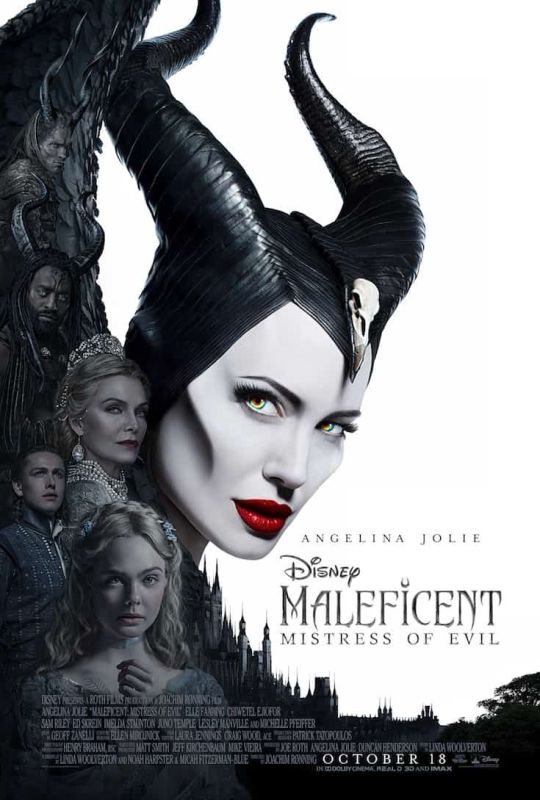
500 days of summer movie poster
Looking for something to spice up your bedroom or dorm room. This is the perfect item to show off your favorite movies and tv shows!! This is also a perfect gift for anyone for any occasion and give someone a gift that perfectly shows off their interests in movies and tv shows! I offer pre made and customizable packs. PLEASE READ THE DESCRIPTION BEFORE ORDERING!! Link to View More print packs: https://haileysvividartist.wixsite.com/haileys-vivid-artist MESSAGE ME FOR RESTOCKS!! I also do album prints in this polaroid style. Please message me for this! **5 packs are random in the genre you select** I am still doing album prints, they are considered a custom pack! You will receive 5, 10, 15, 25 or 50 prints. They are printed on 4x6 inch glossy photo paper. Please keep in mind that older movies will have lower quality images. More recent shows and movies will have much higher quality images. The sets are prepackaged which is why the prints are listed into which set they are in. If you would like a specific print message me around the last week of the month and I can set aside a few prints for your order (I will hold a MAXIMUM of 5 prints per person). If you order a prepackaged print and leave personalization, guarantee you won’t get all the prints you listed. I will send the prepackaged pack. I have custom options for a reason. Please DON'T ask for substitutions. If purchased a custom pack, you can email images to use at haileysvividartistry [!at] gmail.com For the images: -Please try to crop it to a square format, or have the subject in the center so I can crop it to a square -Email in the format of .JPEG, . PNG, or . JPG -If the picture is bad quality that’s how it is printed. I suggest finding the highest quality photo you can For every order over $50, $5 will be donated to charity; if you have a preference of a charity for your order please message me! Thank you :) To hang up you can use tape, blue tack, glue dots or anything else you may want. (Not included in print packs.) Please keep in mind that if you want an older movie, the photo will be less quality than newer movies. I cannot control this variable. Thank you :))
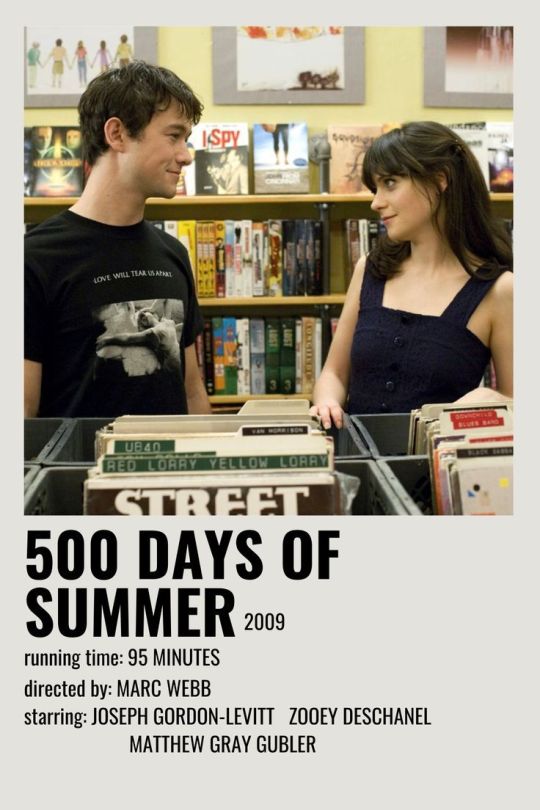
✰𝘱𝘪𝘯𝘵𝘦𝘳𝘦𝘴𝘵 // 𝘴𝘢𝘪𝘯𝘵𝘦𝘭𝘪𝘴𝘴𝘴𝘦
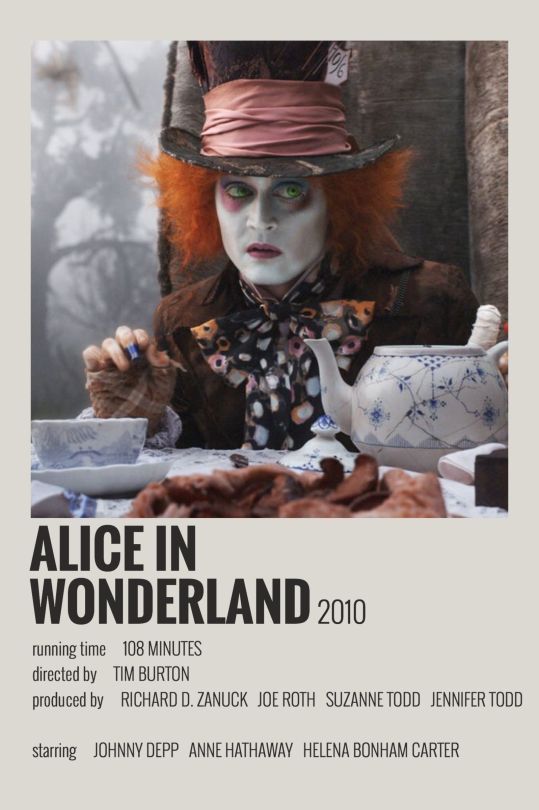
The Princess Diaries Movie Poster Poster by imogen ripley
Blank walls suck, so bring some life to your dorm, bedroom, office, studio, wherever Printed on 185gsm semi gloss poster paper Custom cut - refer to size chart for finished measurements Includes a 3/16 inch (5mm) white border to assist in framing
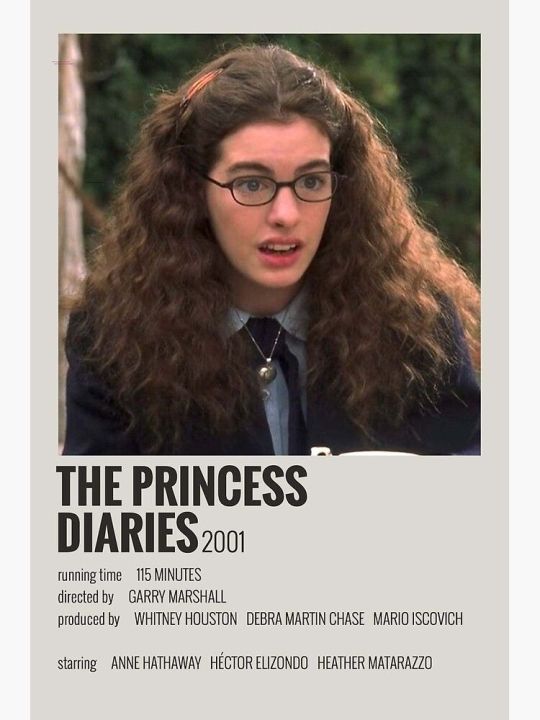
Titanic
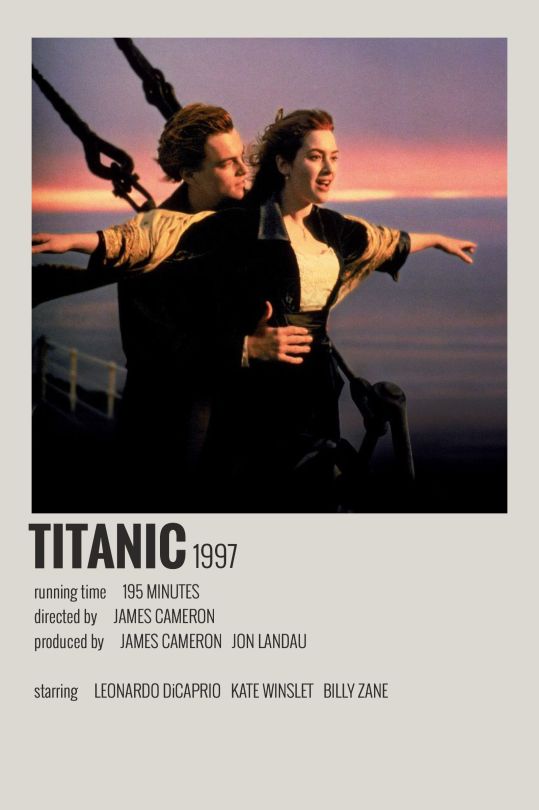
Scream 6 - Original Theatrical Movie Poster 27x40 Advance A
Original theatrical movie poster for Scream 6 Size is 27"x40" Poster is double sided for light box usage. Displays fine without a lightbox. Back side is a mirror image of the front. These are not print on demand, they are original studio printed posters. Near Mint to mint, no speakable flaws. Poster ships in crush resistant tube, polysleeved, with both ends padded.

Alternative Movie Posters vol.2
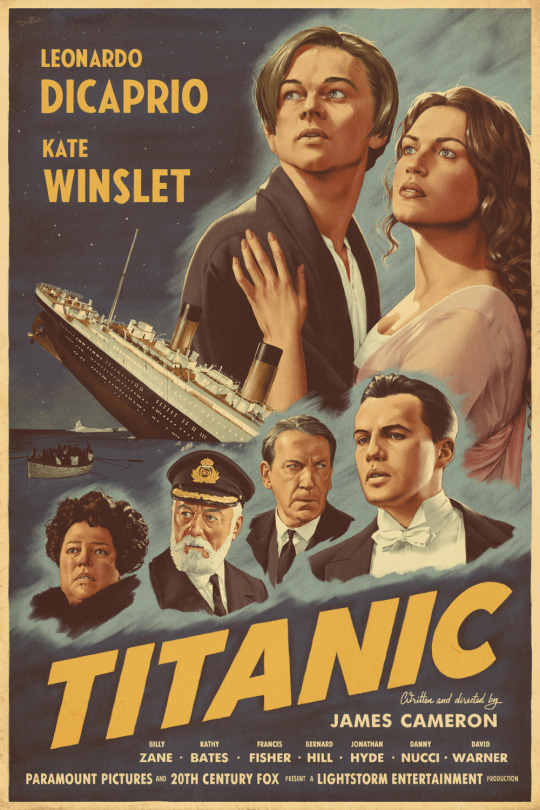
tangeled;aw
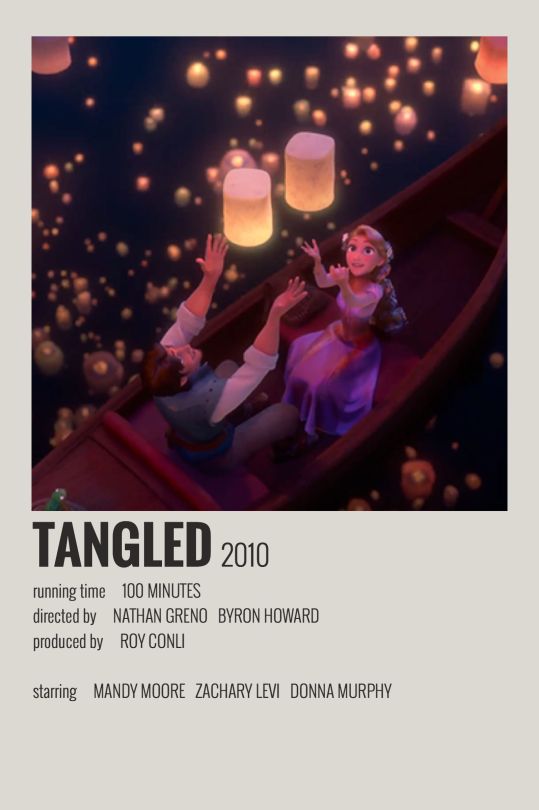
Star Wars Movie Empire Strikes Back Return Of The Jedi Poster

Bad Girl Vibes & Quotes From the Movie Cruella
She's brilliant, bad and a little bit mad. Here are all the bad girl vibes and best quotes from the movie Cruella.

the perks of being a wallflower
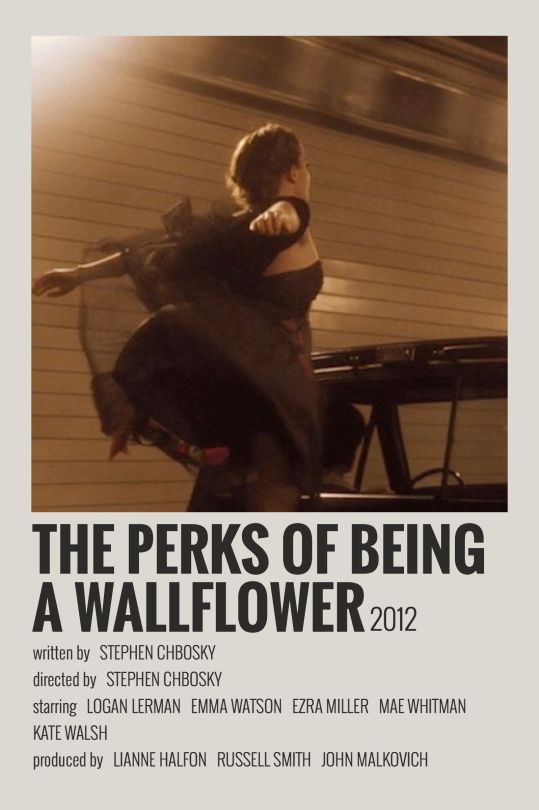
10 THINGS I HATE ABOUT YOU
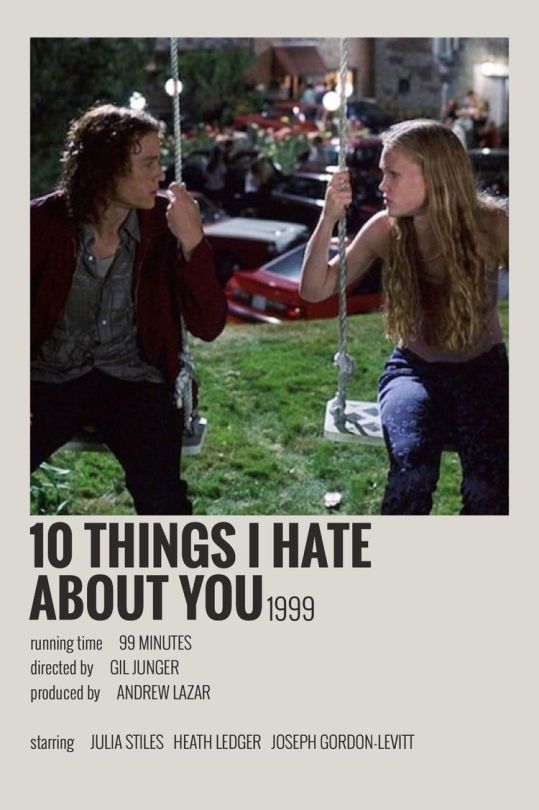
SAM DUNN
Had fun making an alternate NOPE movie poster concept!
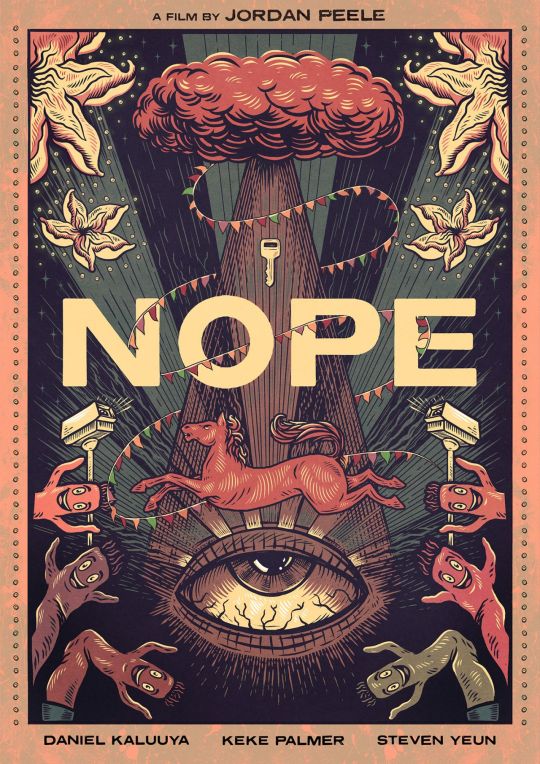
����JFIFHH��C %# , #&')*)-0-(0%()(��C (((((((((((((((((((((((((((((((((((((((((((((((((((�� `="�������c���^?x%6�mHXśf�ܳ���9����506�.��}#-2�{���M������!$�ni��Y����PcHu:1ϒl���ߐukN��f:v��u�j��/ uy���7ƣ|�M��ق�:�m�67�7�m�&X"h�u�_�c7�k�� O49�8�W�h�z4�Ž�qb:���Y�C�X�'B%slM����n�X�M�5�;�'�x��}%m�=�u>��K&�S��N����\]���42�α�f"�;���-m&3�&��f�6��Τ�sK��s[e�S�j�zس6��S~�[8�;��8�'>�f6�d��^�gU8�֫ ���>Kz���'Z�fH4�Y��5�(�6�:�+�t�ϦoV�b��ψ�`�sa:q�y�F���Zte�F��c1ϥ�_>��myI{ˤ��������M"�v�7K�G$Zωb�x�v��]7Y%�mg|�?/�
1 note
·
View note
Note
I've recently started earning a regular paycheck and have been putting aside a bit every month with the intention of donating it all at year end (my way of paying it forward).
I just realized that charities must get a lot of inflow at year end, and maybe a regularly scheduled donation/making it during a different time of year would be better. What would you suggest?
What a kind thing to do! I'm sure your nonprofit of choice will appreciate it. I'm going to outline some options for you below but the very, very short version is that any time you give is a good time to give, and giving at the end of the year is genuinely ok to do, but there are other ways you can help by giving at specific times of the year. And here's an essay.....
Charities do get a lot of year-end giving, in part because of "the holidays" (starting around Thanksgiving if not a little earlier) and in part because of wealthy donors figuring out how much more they need to give at year's end to get a tax break. Some places bring on extra staff to help and most are at least prepared for it so it's not a HUGE deal if that's when you want to give; it's also less of an issue if you give digitally, because usually deposit and acknowledgement of digital gifts is pretty automated. When you give digitally you get an automated receipt email, your money goes straight into an account, and you get dropped into a bucket in the database based on size of gift.
Giving is always welcome and always helps, but there are times of the year when giving will not only help the nonprofit provide services but also help the Development (or Fundraising) branch of the nonprofit look good to their bosses or board of directors :D And that is *drumroll* Campaigns!
Most nonprofits have at least one yearly campaign where they do a giving push -- think pledge week for public television, Giving Tuesday, etc. You can give at any time during the year, but during a campaign or fundraising event, often wealthy donors will offer "matching" gifts (so your $10 becomes $20 because another donor matches it). Even if that's not the case, the effectiveness of the campaign is measured by how much it raises directly, so when you give in response to a campaign it gives the workers a little morale boost as well. For example, one of my colleagues runs our spring and fall campaigns, from writing the copy to choosing the mailing list to purchasing printing services, and then every two weeks he reports back on how much money the campaign has raised, compared to the previous year. He's not going to lose his job if a campaign doesn't make goal or anything, but he is of course much prouder and happier if the campaign does well.
Finding out when campaigns are and giving to them does require you to either get onto the nonprofits' mailing list or keep an eye on the website, but a lot of nonprofits are getting better about not only putting you on a digital-only mailing list but allowing you to customize how much email you get from them. And many nonprofits have several campaigns throughout the year, so you can wait until you've got the amount saved you want to give, then start checking the website every few weeks for a donation campaign or event (a fundraising 5K, a raffle, auction, etc -- in-person events, even if you don't go to the event, are especially glad to get donations because so much work goes into putting them on).
And of course I should add if you do NOT want to be on any mailing lists, the best way to give is to open a Donor Advised Fund, drop your cash into that, and give semi-anonymously through the fund. (More on that here.) The downside to DAFs is that they often work on their own schedule or direct-deposit with the nonprofit, so if you want to give in response to a campaign you may not be able to.
But yeah -- however you give and whenever you give, nonprofits are always happy you gave!
470 notes
·
View notes
Photo
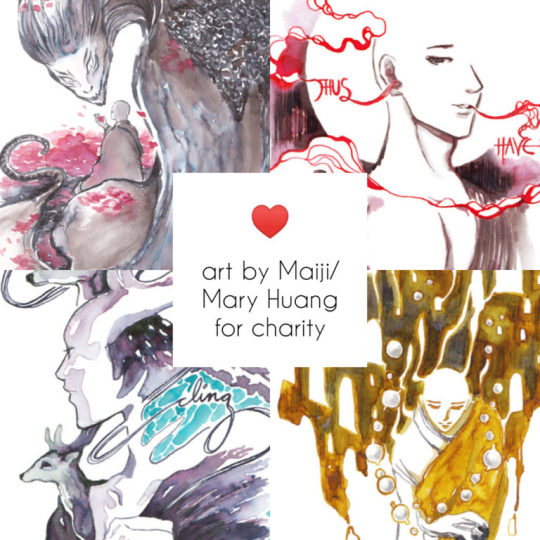

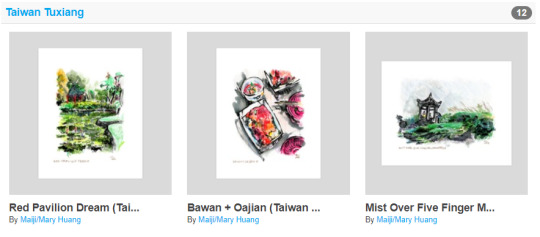
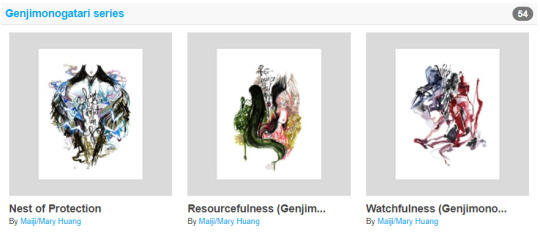
[images: Collage of four ink illustrations overlaid with a heart and text that says “art by Maiji/Mary Huang for charity”, followed by 3 sets of images from several illustration series: hua, Taiwan Tuxiang and genjimonogatari]
INPRNT started their sales today: 15% off sitewide will run all weekend from Black Friday through Cyber Monday (November 28, 2022)
My shop is at: https://www.inprnt.com/gallery/maiji/
100% of profits from sales in my INPRNT shop go to charity. For more information, see this post: humangray.com/art-for-charity More info on the environmental organizations I'm currently supporting, as well as links to climate crisis resources: https://www.pillowfort.social/posts/2716298
I've included a few screenshots of some of my most recent illustration projects (hua - 15 illustrations so far; Taiwan Tuxiang - 12 illustrations to date; genimonogatari - completed at 54 illustrations, which are also available in mini form as an art/game card deck through The Game Crafter).
You can check out more of the collections here: https://www.inprnt.com/collections/maiji/
Also, some thoughts as I'm writing this post that I wanted to share, for myself as much as anyone else, especially as we head into a very busy holiday season full of socially-driven expectations.
We're all being bombarded these days with messaging. A gentle reminder to myself to try to not get too caught up in a pressure to act or consume mindlessly.
To consciously think about what I want, why I want it, what happens if I do/buy it, and what kinds of things I am supporting with the purchases/decisions I make.
To recognize those answers may be something different for everyone.
To recognize that nothing is perfect, but that it's important to at least consciously ask the question.
To appreciate that even if I try to be conscientious and careful, I may still make decisions that I regret, and to respect that experience as part of learning.
Over the last few days I've found myself looking at all the promotions in my inbox and on my feeds, clicking through, making wishlists or adding things to a shopping cart and letting them sit there... and then, after thinking over them for a few days, deleting them.
I know I'm definitely going to be spending (and already have spent) money as a result of these promotions, but I'm trying to make sure they are meaningful, and that I've done my best to be honest with myself on what/why I'm spending the money and what processes I'm triggering as a result of them.
For example, some thoughts on this sale - INPRNT seems to have 15%-off sales regularly. Do I need it now? Could I group things together for a future purchase? (INPRNT does enable you to centralize purchases for a bunch of different artists which is nice!) Also, in this particular case a main consideration is the lovely idea of not just supporting an indie artist :D but also climate crisis charities at the same time... but this artist is fortunate to be in a position where I can also be very happy when people support me in other, non-monetary ways as I outlined in this old post (please do note these are things that are true for me, but not every indie creator out there!), and one can also donate to worthwhile climate crisis charities directly.
Thanks so much for reading ❤
7 notes
·
View notes
Text

Wednesday Spotlight #62 - June 30th 2021
What’s new? A new store spotlight, of course and a couple of zines that are coming to their sales deadline. Apart from that nothing much.
You know, apart from Good Omens getting a season 2, still with Neil at the helm ;) (I am aware not everyone is thrilled but please do not cause trouble or argue with people unless they tell you it's okay - just imagine all the fan content that will be spawned in the second wave).
Do you have or do you know of a fancomic or zine on sale/pre-order don’t hesitate to let me know.
The store spotlight: I’ll link to one etsy/redbubble/insert-platform here, every week. The rotation goes by order of me finding the links and whatever links you guys might send to me. And yes, you’re more than welcome to send me the link to yo
Store Spotlight (GO Merch)

Andy C White
While we’ve featured this shop before, there is a new collection of GO art/art studies out from them. Check out Pocket Omens :D
Good Omens Fanzines/fancomics open for orders/pre-orders:

Blissful Imperfections
It’s time for Hot Monster Summer! Blissful Imperfection, a Good Omens monster/trueform-themed zine, is now open for pre-orders! The pre-order period will be from June 6 - July 9 and all proceeds will go to charity.
Click here for buying options/bundles (there is also sponsorship information)

LAST CHANCE Our Side Pride 2021 (free download with donation option) Open till June 30th
The month of June kicks off PRIDE MONTH in the United States, the yearly celebration of the wider LGBTQIA+ community!
Our Side Pride 2021 is here to showcase all of that joy from members of the community and allies in the GOOD OMENS fandom.
Link to download and donation information

LAST CHANCE Dark Omens Zine (charity/donation zine) open till July 3rd
Please read the information here on purchase/donation. There is a list from which you can choose charities (all listed by the contributors to the zine)
—————–
Note: Zine pre-orders have been moved from Saturday’s newsletter to Wednesday’s Spotlight post. Zine’s will be spotlight’ed until pre-orders/orders end date. Personal comics will get one spotlight for now - if more weeks go by without any new ones, I’ll re-boost some of the earlier ones.
If you have a fanbook/comic for sale or a fanzine up for pre-order, please PM me to let me know or email me at ineffableplanner (at) gmail.com. I may catch it on my own but better safe than sorry ;) - same goes for any events or zine signups you’d like boosted in the Saturday newsletter. Also a shout-out to those of you who ping me with links, both for events as well as comics and zines.
For now no commission info as opening/closing commissions happen so fast sometimes the links might not be valid after a few days. As for patreon pages I can’t double check content, so no.
You can find older editions of the Wednesday spotlight by following the tag #Wednesday spotlight
23 notes
·
View notes
Text
Ray Ban Sunglasses Official Charity Event!

@esplinterlove @amandamph @diariodaputariaworld @llocco-blog1 @kaarinyv @ciumenta18-blog @eu-vejo-flores-em-voce @fidem-dei @weallarelivingindreams @lisssylouu @misterios-de-uma-jovem-louc-blog @chill-on-blog @revenciar @historiaseternas @motivosprasonhar-blog @just-for-sex-blog @cinemaeetc-blog @thainallobo-blog @50tonsdebabi @breathing-andliving @deitaresonhar-blog @thejokerneverdiestome @thedresss @uma-princesa @ddopaminee @one--fortheroad @a-simple-passionate-heart-blog @live-for-your-life-blog-blog @rairacbs @bananacaradeana-blog @lucaswavee @indecifravel-alguem-blog @alive-bitching-blog @umheroisempoder @amoroxo-bn-blog @m-eredithgrey-blog @true-is-love-blog @blowitup @juliaritter @mypreciousshelter @beyourdaydream @superstes-chaos @com-verso @ailenizinbuyucusu @thefoolsarehappy-blog @lets-stop-calling-it-love-blog @seatnextoyou-blog @stuck-in-themoments-blog1 @queijo-nacho @an-fe-ta-mi-na-blog @s-emvalor @dezenove-anosdepois-blog @naniscpaslock-blog @welcometo-sanatorium @unico-menino-blog @r-e-c-l-a-m-a-n-t-e-blog @withorwith0utyouu-blog @in-love-339-blog @freeyour-mind13 @dearlifefucku @desejarei @fugimos @ocodigodoamanha @breadstix90 @feelingsachele @i-n-o-c-e-n-c-1-a-blog @pseudoeunoia @heylovegetout @gurlbossy @cloneclubaddicted @mapadoacaso @lightersonfire @psiqueando-blog @my-little-moments @blondeseestra @laviereveusex-blog @pensamentos-ecleticos @no-feelings-here-blog @acidofatal-blog @castigadora-de-almas-blog @p-o-d-e-s-e-e-n-v-o-l-v-e-r-blog @hope-istreacherous @adrems-blog @lesbianforppk @meu-dia-mais-azul-blog @panda-de-allstar-blog @myangelflungoutofspace @avrilsmine-blog-blog @isunbrok3n-blog @nothinglikebiebz-blog-blog @nanycl @dreamermadeofscars @amortenso-blog-blog @347-km @menina-fragil @sentimentalismosecreto @guilhermemaadrid @bibritto @princesaa-do-avesso-blog @id0latrado-blog @ladoesquerdodoespelho-blog @particles-of-love @bentolina @watchyoudisappearyeah-blog @o-n-l-y-a-h-e-a-r-t-blog @deixaserluz-blog @profundezas-do-desespero @sendmesomelight-blog @waldurfs @lagrimas-negras-blog @precipici0 @meu-pai-tem-dois-empregos-blog @breakingdawnever-blog-blog @sorrisobanguelo-blog-blog
The official charity event of Ray-Ban sunglasses, all styles of glasses are only $24.99! We will donate 50% of the profits to the COVID-19 epidemic prevention department. Every purchase is your support for charity, thank you!
Click to buy>>>Enter the online store
5 notes
·
View notes
Text
MHA Youtubers | DetectiveDeku
Izuku Midoriya Headcanons
Warnings: Mentions of true crime, mentions of gore and blood and mangled body parts
A/N: I pre-wrote this and feel bad I didn’t put out an actual UA Idol chapter so, have this instead, I hope it’s okay!

Did somebody say true crime?
No?
Are you sure?
Cause that’s what our little broccoli boy loves
He’s BIG into true crime
Specifically, unsolved cases
He just wants to help these families find their loved ones, okay?
Or find out who took their loved ones away from them
He believes strongly in justice
And has
V E R Y L O U D
Opinions on how cases are handled
He can and will go on a rant in the middle of his videos
Usually those rants don’t see the light of day
But uh
For his 1 million subscribers milestone he decided to release some of them
Was it amusing?
Of course
Did he punch a hole in his wall during one of these rants?
Yes
Was it kind of refreshing to see a different side of this happy little celery stick?
Most definitely
Kinda scary?
Yah
He never deviates from his true crime videos
But one of his favorite things to do that (for the most part) isn’t unsolved mysteries
Is collab with one of his friends
And tell them stories about serial killers
The genuine shock on his friends faces when he tells them about these cold-blooded murderers in the calmest tone
“D-Did you just say Jack the Ripper gutted women? Like fish?!”
“Yeah, crazy right? I mean taking into consideration that he was probably medically trained in some way, too? Terrifying. What if your doctor had a hobby of finding and violently murdering prostitutes? Like what do you do? Find a new one?”
Uraraka was horrified
He frequently tweets about cases
Asking his followers what they want him to cover next
A lot of the time Kaminari catches some crackhead behavior of Midoriya in his vlogs
Like the time that he randomly just
Ran into the room
Kicked Bakugou to the ground
Flipped him off while he was writhing on the ground
Screamed something along the lines of
“SURPRISE ATTACK FUCKING BITCH”
And then ran right back out of the room
Or the time that he was just chilling
Drinking a latte
And Denki asked him what he was thinking about
And he answered with
“You ever have the sudden urge to stick your finger in a blender just to see what would happen?”
“MIDORIYA”
“Okay don’t MiDoRiYa me, Denki, I know you’ve thought about this because you’re you. Do you think it would get cut off or just kind of mangled or like, what?”
But most of the time it’s just wholesome
Commonly referred to as a cinnamon roll
One time one of his videos helped solve a case
There was a girl missing for 5 years
And Midoriya made a video about her
And someone watched it
And realized
“Hey that aged up rendering looks oddly familiar to my next door neighbor’s daughter who moved away from her mother and in with her father five years ag- W A I T A S E C O N D.”
He was
So
Proud
He did a video with the victim
Let her tell her story
He also donates 50% of all of his merch sales to charities
“Remember, half of the money you use to purchase my merchandise goes straight to Thorn. Help prevent human trafficking today and go get a hoodie or something.”
“Because it’s the Holiday Season I’m donating 100% of my merch sales to charity. You get to choose which charity you want the money to go to when you check out, but I recommend Find The Children. This time of year can be really hard for families who’s loved ones are missing. Find The Children is a charity that does everything they can to reunite families again.”
Speaking of merch
His merch is adorable
Very colorful
Very cute
“Detective Deku” is a great name to go on hoodie sleeves
Who knew?
He did apparently
The amount of Hunt A Killer sponsors he has
Ridiculous
There’s so many
And he frequently has livestreams where he’s figuring the whole thing out with his fans who can’t afford it
He asks questions
Listens to their opinions and suggestions
And he doesn’t care how long it takes
He loves his job
Even if he needs to work some other jobs on the side every so often because the heavy material in his videos can cause them to be demonetized
He’s helping
That’s what matters
How soft
#midoriya#izuku midoriya#deku#mha deku#mha midoriya#midoriya hedacanon#deku headcanons#deku au#mha au#mha headcanons#izuku midoriya headcanons#my hero academia#my hero headcanons#boku no hero headcanons#my hero academia headcanons
34 notes
·
View notes
Note
How are zines normally set up? I’ve never really participated in one. Also, do participators have to pay money to work on the Zine?
Idk if you meant like the general process or what artists/writers have to go through but uh? I’ll try to give a brief rundown for you!
Normally zines start with a basic idea/theme for a fandom, and the main zine mods all communicate and discuss the general layout for what’s going to happen! Interest checks come first to gauge fandom reaction, and then if they’re needed, applications open for additional mods to handle things like financing and graphic design.
After that, artist and writer applications open, and if you’re accepted into the zine, they usually have you join a discord server so you can stay up to date with production! In the server, you can look at all the requirements of your piece. Depending on the zine you might get assigned something specific to do, or you might just have free reign. Most zines keep a spreadsheet with contributor ideas so that not too many concepts overlap or are repeated. Once your idea is greenlit, you can start working on it! Zines have 3-4 checkins once every month or so to just show your progress and make sure you’re actually working on your piece and not procrastinating lol. You are allowed to drop out of the zine if you feel like you can’t finish your piece in a timely manner or for any other personal reasons--this allows for the pinch hitters to step in and take the place of anybody who drops out during the production period.
While this is happening, the mods are handling social media, doing contributor spotlights, answering general questions, and also researching on zine costs and where to order all of the physical merch and books for it. When the final checkin happens and everybody turns in their piece, they’re all handed off to the graphics mod to assemble them and put them together and make them look all pretty within the guidelines of whatever the mods decide they’re going to print! After that, when the PDF is assembled and everything looks good, the team will get proofs of merch, and preorders will open! During preorder period all the contributors will be asked to post previews/sneak peeks of their works in order to gain interest and get people to buy the zine. When preorders close, all the ordering will happen--the shipping/handling mod will get all of the zine booklets and merch, and will have to pack everything individually to send out to all of the buyers. Normally as soon as shipping starts, or once everyone receives their packages, people who purchased the PDF of the zine will get that emailed to them. Finally sales are over!! Everything has been delivered!! And then, extra sales open back up for any leftovers.
Once sales are closed for good, all of the money the mods received from zine purchases will either be donated to charity or split among the contributors (depending on if it’s profit or not). So no, zine contributors don’t have to spend anything--if the zine is for profit, you’d end up getting paid for your work instead ^^ Usually contributors get their own copy of the zine and the merch for free (if there isn’t any overlying financial issues) so that’s a nice bonus too!
Anyway I’m sorry that was so long adksaldm but I hope it was helpful :’D Zines are HUGE projects and take a lot of teamwork to pull off...but they’re super fulfilling and fun to participate in! The mods do most of the work lol, the only stressful thing for the contributors are meeting the checkin deadlines and getting their final pieces submitted on time.
#Shima answers questions#Zine#Long post#Whew!!#Hopefully I got everything haha#I know the order isn't exact sometimes things switch around but yeah generally that's how it goes#I've been in enough zines to get a handle on how the process goes LOL
64 notes
·
View notes
Text
On the Full Plate Threshold and the Nature of Money
"Can I buy a magic sword?"
This is a question that seems straightforward, but is actually fraught with follow-on implications that are not obvious. It is also one that's asked at some point in any D&D campaign. You might be thinking, as GM, that you're making a choice about the setting of your campaign (is this a high-magic or low-magic world, a desert island, a major trade city, etc). While you are making this decision, you're also deciding (perhaps without knowing) what money is in this game. You're deciding whether your adventuring party will build castles or not, whether they'll hire armies or not, whether they'll go adventuring or not, whether they'll be greedy or not, and whether they'll care about rewards at all after the fighter gets her hands on a set of Full Plate.
In my experience, money in RPGs is used for one of six things: character power, narrative power, oxygen, skill, XP, or nothing.
Money as Character Power
This paradigm is the one most familiar to 3.x veterans such as myself, and is the direct result of allowing magic items to be purchased freely for money. This allows players to invest money in their character's powers and strengths in the same way they do with skills and feats. There is a slightly different set of constraints on how money is spent than skill points (which is to say, the party must find a city), and may be further restrictions still (such as 3.x's limitations on the most expensive items that can be bought in each size of settlement), but at the end of the day, players can pretty much buy whatever they have money for.
In essence, if a player can convert currency into better stats, damage, armour, etc., then in your system, money is character power and should be treated as such. The GM should keep a close eye on how they hand out treasure and quest rewards, as too little or too much money can easily result in difficulty balancing encounters. Third edition D&D came with a table stipulating how much money each character should have at each level (the (in)famous "Wealth by Level" table) and balanced monster CR based off of this assumption. In my younger years, I GM'd several campaigns in which I restricted purchase of magic items because of campaign setting reasons (it was a low magic setting, or the party was far from civilization, or whatever), and then was shocked as the party struggled against ethereal monsters or monsters with damage reduction, yet with CR far below their level. Additionally, such restrictions won't affect all characters equally—a 3.5-era sorcerer, for instance, can operate just fine despite absolute poverty, while a fighter will really feel the lack of a level-appropriate magic sword. Monks, despite not using weapons or armour, are ironically among the classes most dependent on magic items because of their dependency on multiple ability scores.
Determining whether your system assumes money as character power may not be immediately obvious, but as a GM, it is crucial that you find out. D&D's modern-era spinoff, D20 Modern, does not use money as character power, as you can't simply buy better and better guns as you level up—once you've realized that the FN 5-7 pistol and the HK G11 rifle are mathematically the best guns and you've bought them (which you can easily do as a first-level character), you're set for the rest of the campaign. However, D20 Modern variant campaign settings, such as D20 Future and Urban Arcana, do allow you to directly convert money into character power, as the reintroduction of D&D-esque magic items of Urban Arcana and the "build your own gear" gadget-system of D20 Future allow unlimited wealth to be converted to unlimited power.
What to Watch as a GM: Ensure a steady trickle of monetary rewards that increase as the players level, realize that players will be increasingly antsy to reach town the more treasure they have, keep an eye on any game-provided wealth-by-level suggestions, and be wary about player-driven "get rich quick" schemes and item crafting systems. Be very cautious about allowing a PC to borrow money from an in-world bank or other lender, as they could quickly invest that money in magic items and destabilize the game balance.
Advantages: Combing through books to find perfect magic/sci-fi items is very appealing to some players, and it allows the GM to dangle money in front of his or her players to hook them on adventures.
Disadvantages: Can lead to very hurt feelings (and huge game imbalances) if a character is robbed/disarmed in–game, as it is functionally equivalent to erasing a feat from their character sheet. Further, the game can break down very quickly if there is a wealth disparity among the party, as there are more than simple roleplaying repercussions to playing a "rich" or "poor" character. Some players find this system "video gamey," and others feel that it overwhelmingly encourages players to steal everything not nailed down.
Best For: Combat-heavy games in which a "build" is important, high magic/soft sci-fi settings.
Money as Narrative Power
When money sees its most use bribing officials, hiring mercenary armies, building castles, or funding large-scale operations of any kind, money in your system directly converts to "narrative power." Players can use cash to influence the game world and the direction of the story, but not necessarily to deal more damage in combat (or heal more, or buff more, or whatever). This is where D&D 5e tends to get to after low levels (see "Crossing the Streams" for more on this). Many gritty, film noir-esque stories rely on key characters being dangerously in debt and are called to adventure by motivation to pay off said debt. Depending on the details of the campaign world, however, Players might stop caring about money entirely if it doesn’t directly relate to the plot or some kind of scheme.
What to Watch as a GM: If you come from a legacy of "Money as Character Power" games, you might have to remind yourself to loosen your grip if one or more characters seems to be accumulating "too much" money. Just because money doesn't have direct applications in combat and adventuring doesn't mean it isn't an important game resource—be sure to provide opportunities for players to use their money to solve problems, or else they'll quickly ignore it entirely.
Advantages: Allows a host of narrative options restricted by "Money as Character Power" games, such as managing businesses, organizations, or fiefdoms. Allows a wealth disparity between party members with only moderate issues. Additionally, allows stories involving borrowing and lending money without breaking balance in half, and overall can feel quite freeing.
Disadvantages: Can still cause problems if one PC is notably wealthier or poorer than the rest, depending on the players themselves, as they might end up driving the story. Unless finances are baked into the plot, using money as a reward is unlikely to garner much interest on behalf of the players.
Best For: Gritty realism, power politics, games that will eventually result in characters becoming lords/ladies/CEOs/etc.
Money as a Skill
In some ways, this is the exact opposite of "Money as Character Power"—when money is treated in your system as a skill, players have to sacrifice combat power in exchange for wealth. For instance, in the Fate-based Dresden Files RPG, if a player selects Resources to be one of their better skills, they are consciously giving up choosing, say, Weapons or Fists as a good skill. In such a system, a character's wealth is abstracted, and largely unaffected by major purchases or sales. Similarly, monetary quest rewards are pretty much off the table unless similarly abstracted.
This system strongly encourages huge disparities in wealth between party members, allowing rich and poor characters to solve problems equally well, just in different ways.
Note that "Money as a Skill" doesn't just mean that purchases are handled by skill checks, but rather that the wealth of a character is as core, internal, and untouchable as their other core stats, like Strength, Agility, etc. D20 Modern uses a system similar to skill checks to handle finances, but a character's Wealth score fluctuates hugely when they buy or sell things, so doesn't entirely fit in this paradigm.
Sometimes these systems do away with money altogether, such as the mecha rpg LANCER, which exists in a post-scarcity world entirely without money. Equipment is earned by getting progressively better "licenses," which authorize PCs to replicate increasingly powerful weapons and mecha shells.
What to Watch as a GM: You'll have to find ways to motivate players without monetary rewards, and be sure to find opportunities to reward players who invested in their "money" skill, either through narrative or scenario design, just as you would ensure to place a few traps in every dungeon for a rogue to disarm.
Advantages: Allows (and, indeed, almost requires) large wealth discrepancies between characters, and greatly reduces bookkeeping.
Disadvantages: Tends to be highly abstract, which can lead to a mismatch of expectations (such as if players start looting bodies to sell, with absolutely no mechanical impact, or being unsure if "+5 wealth" is middle-class or Bezos-class).
Best For: Narrative games without much focus on accumulating wealth and treasure, but in which money still matters.
Money as XP
This is the oldest of all old-school approaches, and in many ways the logical extreme of "Money as Character Power." When money is used as XP, acquiring gold directly leads to characters increasing in level. Sometimes this requires spending the money (i.e., donations to charity, training, or spell research resulting in XP gains), while other times, it only means acquiring the money (in which case, you have to answer the question of what players are to do with all this accumulated wealth after its primary purpose—giving them XP—has been achieved). This approach has largely been left by the wayside, and many modern players will discount it out of hand, but I'd encourage you to stop and think about it: we already accept that fighting more powerful monsters and overcoming more difficult challenges lead to greater XP and greater material rewards, so why not cut out the middleman and just say the material rewards are XP? One caveat is that, even moreso than with "Money as Character Power," this can result in PCs doing anything to get their hands on cold, hard cash—but, conversely, by removing (or downplaying) combat XP, it can also result in encouraging peaceful or stealthy approaches to solutions. This would lead into a whole conversation about when and how to give out XP, and what behaviours this decision encourages around the tabletop, but such a discussion is outside the scope of this essay.
This system works well for GMs that want their players to be treasure-hungry, like in Money as Character Power, but don't like the inevitable proliferation of magic items that results.
As with "Money as Character Power," under such a paradigm, GM's must keep a close eye on PC's pocketbooks. Taking away their treasure, either through in-game theft, a rust monster, or similar, will lead to frustration and hard feelings. Similarly, anything that lets players turn a profit without adventuring, such as item crafting or simply by getting a day job, could destabilize the game unexpectedly—many systems specify that only treasure found while adventuring counts towards XP, though determining what counts as "while adventuring" can be something of a headache (albeit not an insurmountable one). Additionally, this system strongly discourages wealth imbalances between PCs, as they directly result in some PCs being higher level than others.
Given how out-of-style this is in tabletop games, it's perhaps surprising that several modern video game RPGs fall into this category in the late game. In Skyrim, for example, after I'd bought the best weapons and armour that could be found in shops, future resources went into buying all the world's iron and leather to grind up my Smithing skill again and again, giving myself easy levels.
What to Watch for as GM: Same as with "Money as Character Power."
Advantages: Eliminates post-battle XP calculation entirely, encourages players to avoid direct confrontation, and gives players a very strong monetary motivation (which can also be a disadvantage) without resulting in a high-magic world.
Disadvantages: Can strike some players as unintuitive, and strongly encourages desperate treasure-hunting (which can also be an advantage).
Best For: Games involving treasure-hunting and exploration.
Money as Oxygen
With Money as Oxygen, money becomes something that players need a steady stream of just to survive. Maybe they're deeply in debt, have to make rent payments, have to maintain their equipment, or just have to feed themselves. The reason for their regular thirst for wealth might be narrative (rent, debt, etc.) or mechanical (equipment maintenance, etc.) in nature. In Traveller, a huge source of motivation for the party is just trying to keep ahead of mortgage payments for your starship. Money becomes the same as food, water, and air—a vital necessity that you simply always need more of.
With Money as Oxygen, players constantly have to eye their dwindling bank accounts and do cost-benefit calculations before accepting a mission, or else disaster could strike. This is a very, very different genre from "Money as Character Power" or even "Money as Narrative Power," as it rarely results in the party spending their money on anything other than survival. Unless they really hit a gold mine, they won't use money to upgrade weapons or armour, or to buy land and power, because doing so runs the risk of starvation/bankruptcy/etc.
This probably isn't the paradigm to use for most D&D-esque campaigns, as it can (and should) result in players actively avoiding heroic archetypes—if survival depends on a paycheck; the crusade against evil is someone else's problem.
What to Watch for as GM: This paradigm is bookkeeping-heavy, so make sure the players understand that from the get-go. Also, anyone expecting "Money as Character Power" might find themselves frustrated by their ever-dwindling resources. Make sure you have a very good handle on the math of the players' survival (that is, exactly how many gold pieces/dollars/credits they need to survive a week) or you might accidentally underpay them and lead them to ruin. Not that this shouldn't happen; it just shouldn't happen by accident. If you accidentally give them too much money, feel free to timeskip ahead several months until they're broke again, or dangle another moneysink in front of them, like a one-of-a-kind, now-or-never opportunity to buy a shiny magic item or spaceship upgrade (dipping judiciously into Money as Character Power).
Advantages: Makes the players feel poor, desperate, and downtrodden.
Disadvantages: Both the players and the GM have to keep a very, very close eye on finances in order to maintain tension. If paired with a mechanical system that doesn't result in substantial character progression from XP (such as skills, feats, etc.), then players can feel stuck and lacking motivation.
Best Used For: anything that can be accurately described with the words "seedy underbelly."
Money for Nothing
We've all played games in which money is straight-up useless. In many Zelda games, for example, like the classic Ocarina of Time, monsters drop rupees all through the game. In addition, there are secrets, hidden chests, and puzzles that pay out rupee rewards as if the game thinks they would make you happy. After the first hour of the game, it becomes blindingly obvious that there's no point to this money, as the things you would buy (arrows, sticks, bombs) are just as freely dropped from monsters and bushes. Many other video games hit this point after the early game as well (like Diablo II, where monsters continue to drop thousands and thousands of gold throughout the game, but there's nothing worthwhile to spend it on).
I personally can't see any advantages to this system, as I don't think it's chosen by design.
Crossing the Streams
Of course, few games fall strictly into one of the above categories, and most aim to do two or even three, which can lead to some common pitfalls. For example, the 3e splatbook the Stronghold Builder's Guide allowed players to spend tens of thousands, even hundreds of thousands, of GP on elaborate castles and mansions. These was very cool, and the rulebook is one of my favourites from the edition… but I've never seen it used in actual play, because any player who did so would find themselves handicapped for the remainder of the campaign, as they hadn't invested their gold in magic items, as the system requires you to. (Again: the math of monster design in 3.x assumes and requires that player characters gain magic items at a set rate).
Some of the paradigms play nicer with each other than others. For example, many variants of "Money as XP" practically require a secondary output for money. Unless the XP is only gained by spending the money, all of that accumulated loot has to go somewhere—typically either into magic items (Money as Character Power) or into strongholds (Money as Narrative Power). Games that have large-scale battle rules (which, I've been told, ACKS does, though I haven't played it firsthand) blur the lines between Narrative and Player power, because the castles and hirelings a player buys actually do something, mechanically, though they typically don't help you in an actual dungeon. "Money as Oxygen," similarly, may require temporarily dipping into another paradigm to bleed off surplus money from the party to keep them permanently poor (something Traveller does gracefully by allowing incredibly-expensive spaceship upgrades).
The Full Plate Threshold
The Full Plate Threshold: once the players have bought the most expensive item available to them, the nature of money permanently changes.
One very common dynamic is for games to have Money as Character Power in early levels, and transition to another paradigm (or fall into Money for Nothing) at later levels. This is particularly common in video game RPGs, where after the early game, nothing anyone sells in stores is of any value whatsoever (or if they do, the price is trivial), yet despite this, monsters continue to drop thousands upon thousands of gold. If these games have a multiplayer aspect, players usually settle on a rare item as the de facto "currency" for trades.
This is also the dynamic that results when the sale of magic items in D&D-esque games is restricted, as in early levels, players save up to buy half-plate to replace their breastplates, warhorses to replace their feet, composite bows to replace their shortbows, and so-on. Once the most expensive upgrade has been bought (in D&D, the last character to make this transition is typically the fighter, as the best mundane armour available is a steep 1,500 GP in 3.x and 5e—a friend of mine dubbed this the "Full Plate Threshold" after my 5e paladin bought full plate, and we all suddenly stopped caring about gold), money is no longer convertible to Character Power. At this point, which can happen between level 3 and 7 depending on character class, system, and GM generosity, the nature of money in the campaign will change. This could result in the widening of scope in the campaign, as players invest in land, armies, and castles, or it could result in money piling up like in Diablo or Final Fantasy, totally meaninglessly. Similarly, many campaigns that start with "Money as Oxygen" can escalate into "Money as Narrative Power" as players finally hit the jackpot, and no longer need to worry about maintenance/mortgages/etc.
As a GM, handling this transition can be tricky. If it sneaks up on you without realizing (many 5e D&D GMs might not know (because they weren't told), for instance, that the nature of money changes dramatically the second someone buys full plate), they might suddenly find their players disinterested and bored around the table even though seemingly nothing else has changed. Their adventures are just as gripping, their monsters just as scary, their dungeons just as unique... but the players seem to be just going through the motions If your system or campaign doesn't have an endless supply of increasingly-expensive bits and baubles for players to buy, you're going to have to manage this transition, whether you want it or not.
Wrapping Up
There is no objective "right" or "wrong" way to handle money in an RPG, but some methods definitely work better for certain genres than others, as changing the "rules" of money in your campaign will massively change the feel and pace of the game. On the same note, be careful of follow-on effects from changing the rules: simply saying "magic items can't be bought," without making any other changes, will lead 3.x campaigns into a series of very predictable roadblocks (weakening martial characters, unevenly and unpredictably increasing encounter difficulty, and potentially eliminating motivation to go on some adventures) that you have to have solutions to. Similarly, adding a "magic item store" to a system not initially designed for it, such as D20 Modern, can lead to massive imbalance and weird behaviour. For instance, due to bizarre math, even relatively powerful magic daggers fall below the threshold at which rich characters lose wealth points in that system, making them literally free, while buying an unenchanted, off-the-shelf AK-47 (which is just above that same threshold) permanently drops the wealth bonus of any character. This leads to the system incentivizing any problem that can be solved with thousands of +3 Daggers being solved with thousands of +3 Daggers in a way that neither GMs nor (I assume) game designers intended.
These incentives matter. If a game penalizes one option and incentivizes another, that second option is just going to be taken more often. Maybe a lot more often. If you can align your campaign's incentives with desired behaviour for your players, you'll save a lot of headache, frustration, and counter-intuitive behaviour for everyone involved.
78 notes
·
View notes
Text

Hey #houston ...
You didn’t think I’d forget you!😎
The Biker Book for Charity Y’all Crawl Book Tour is coming to Stubbs H-D!
Swing by, say 👋, and purchase your copy of the book—inspired & written by the women and men (celebrities and every day riders) of the motorcycle community.
💯 donated to children’s hospitals.
Can’t make it? You can order signed copies here:
https://checkout.square.site/buy/6L7HNPEAVIQRZTMH7MRZNQUU
❤️❤️❤️
#harleydavidson#motorcycle#motorcycles#ducati#bmwmotorrad#indianmotorcycle#yamaha#honda#kids#charityevent#book tour#booksigning#fundraiser#childrenshospital#houston#texas
2 notes
·
View notes